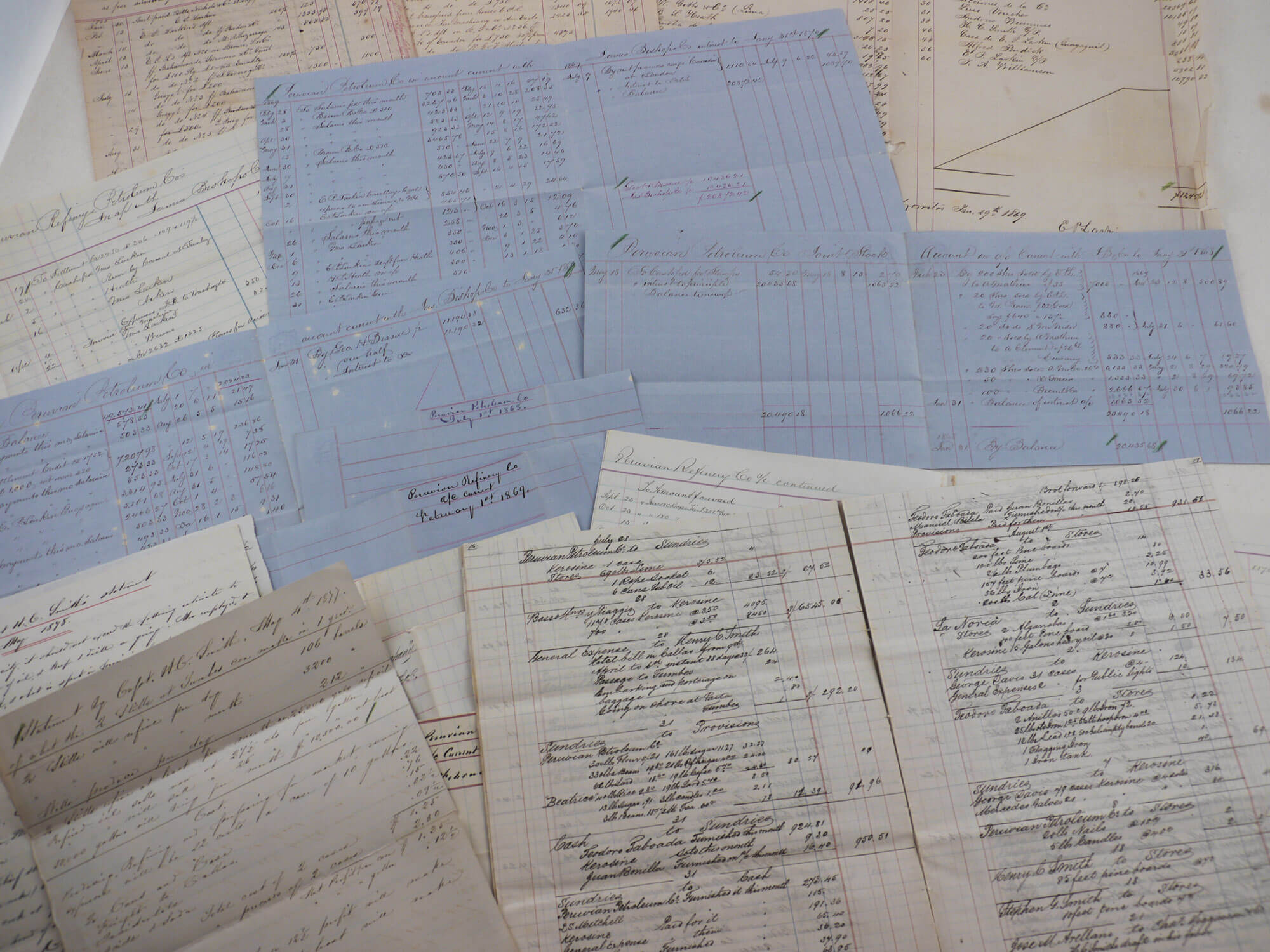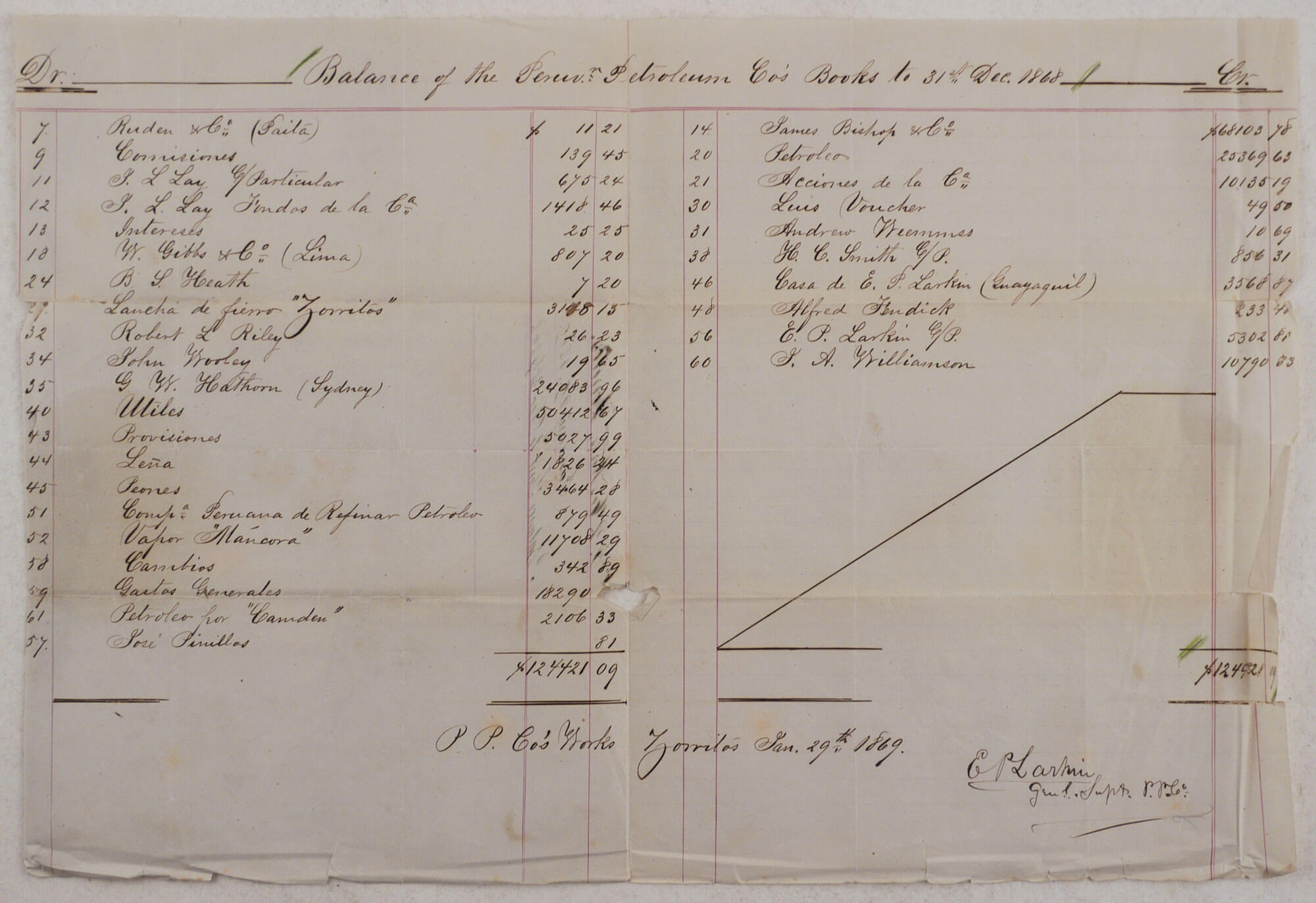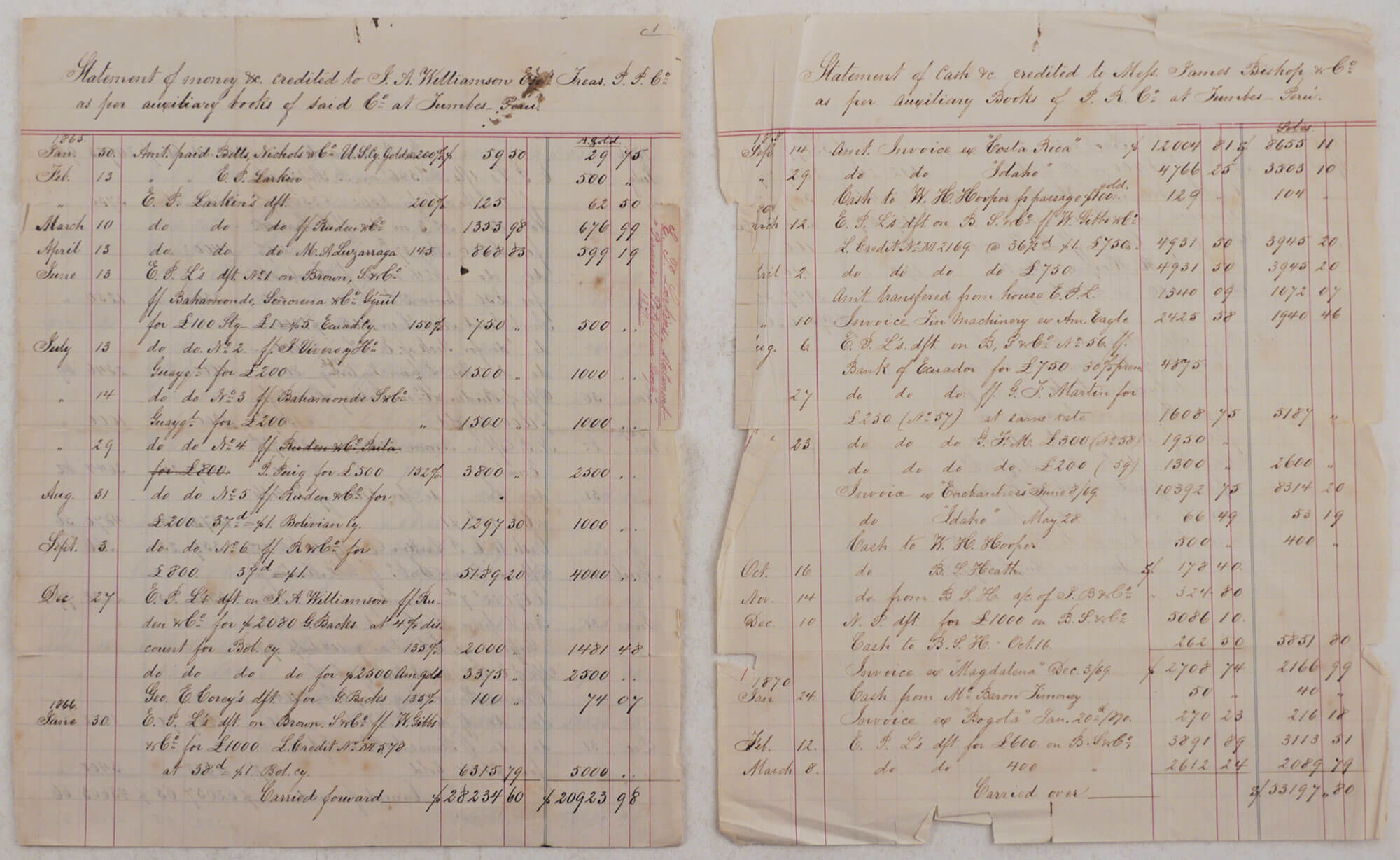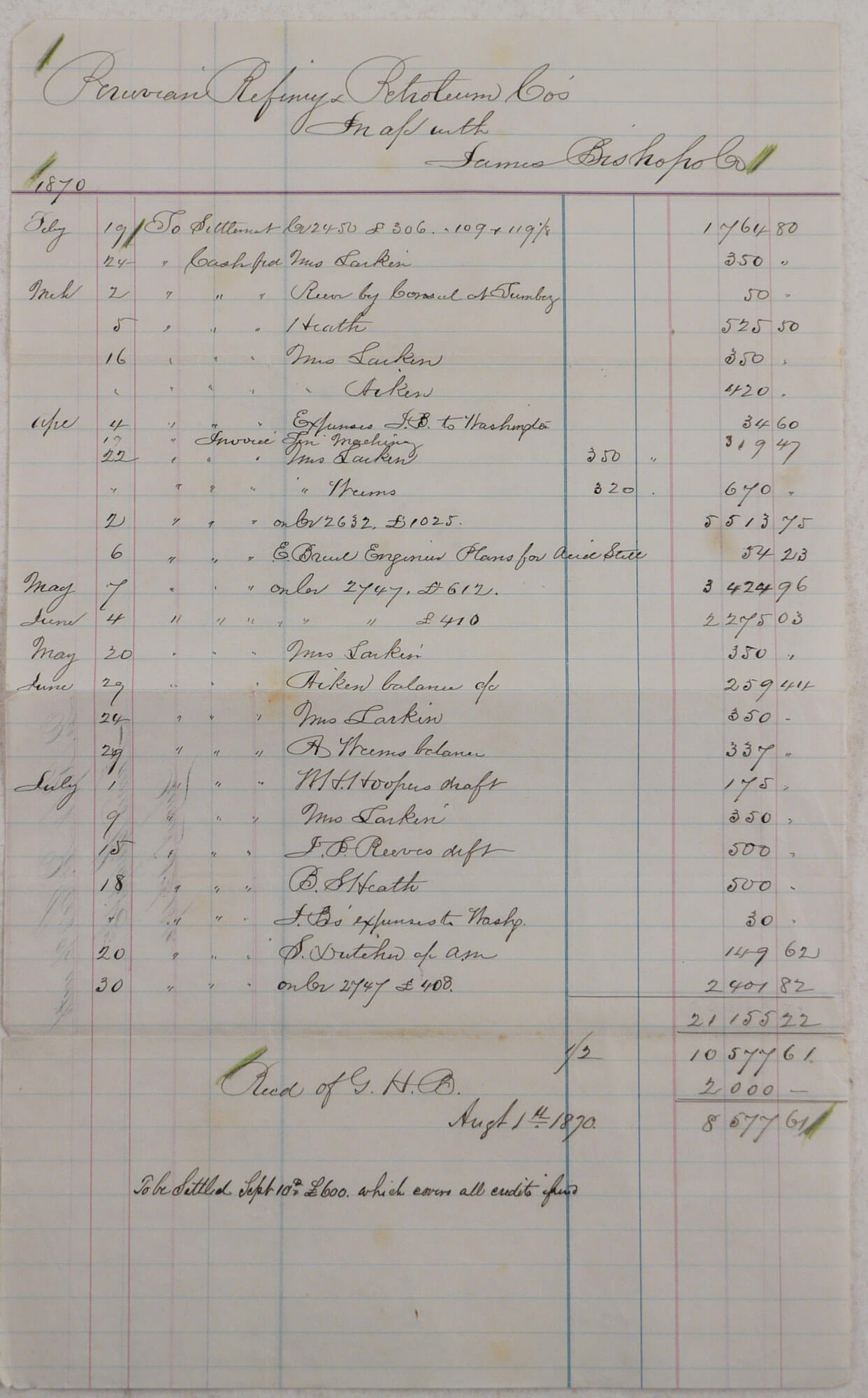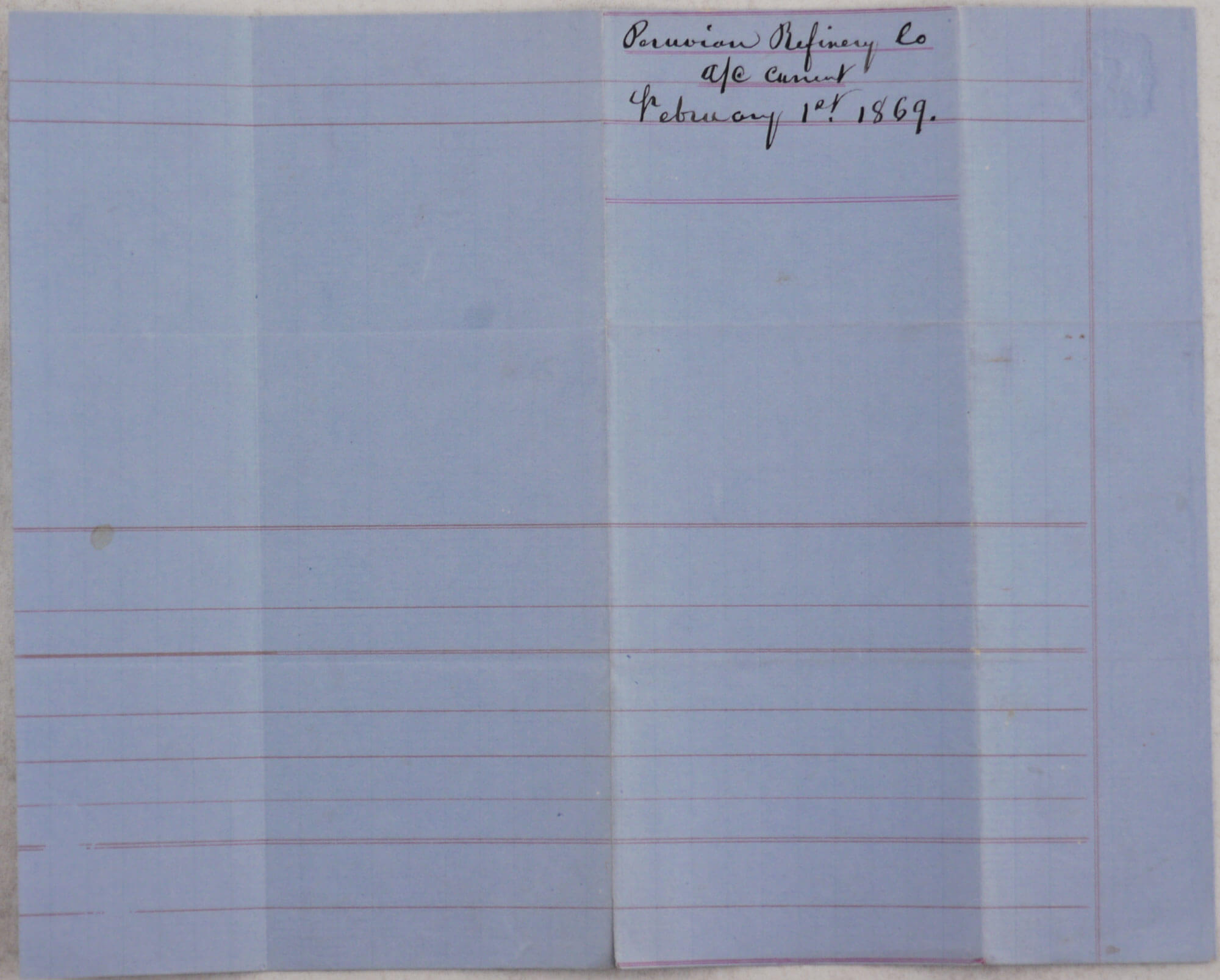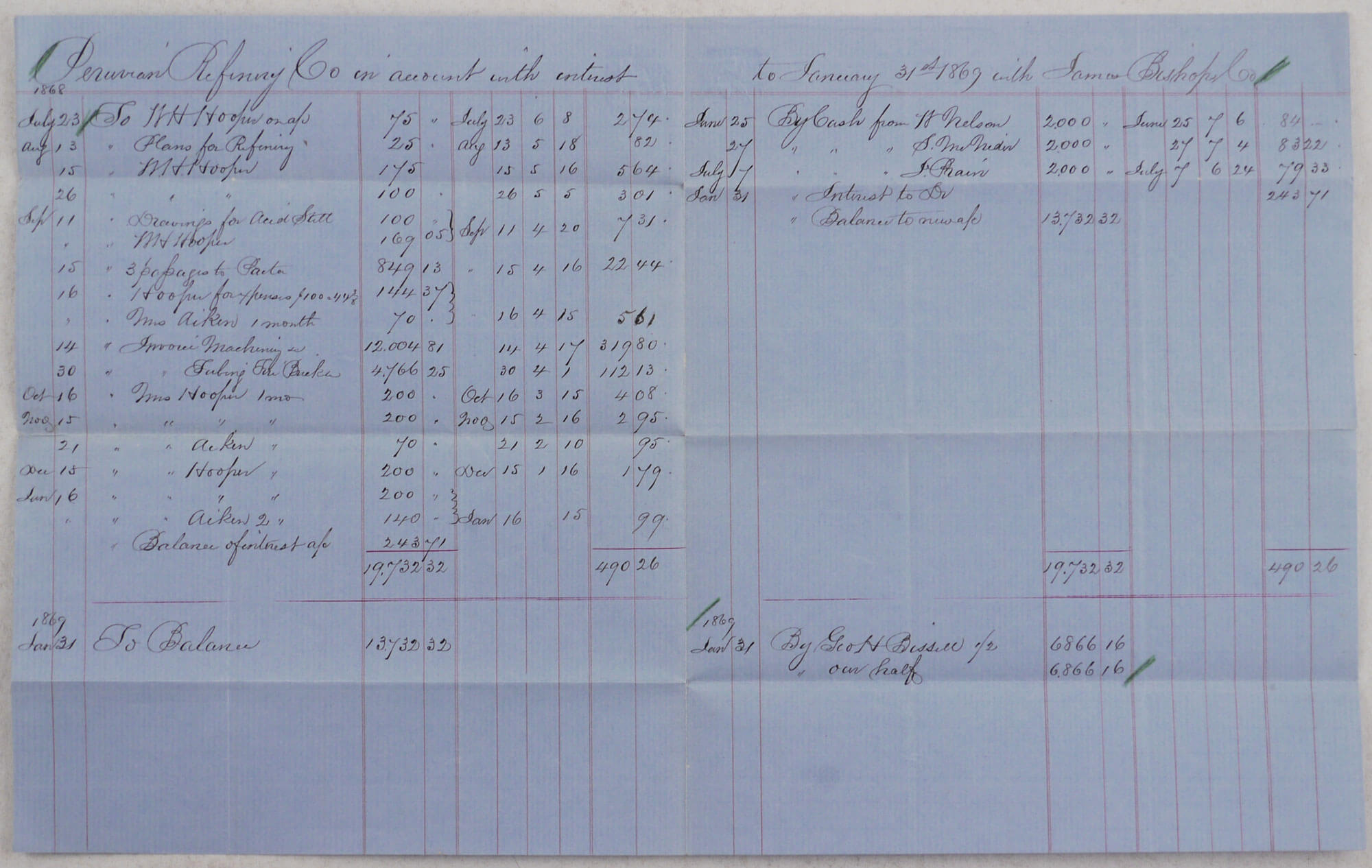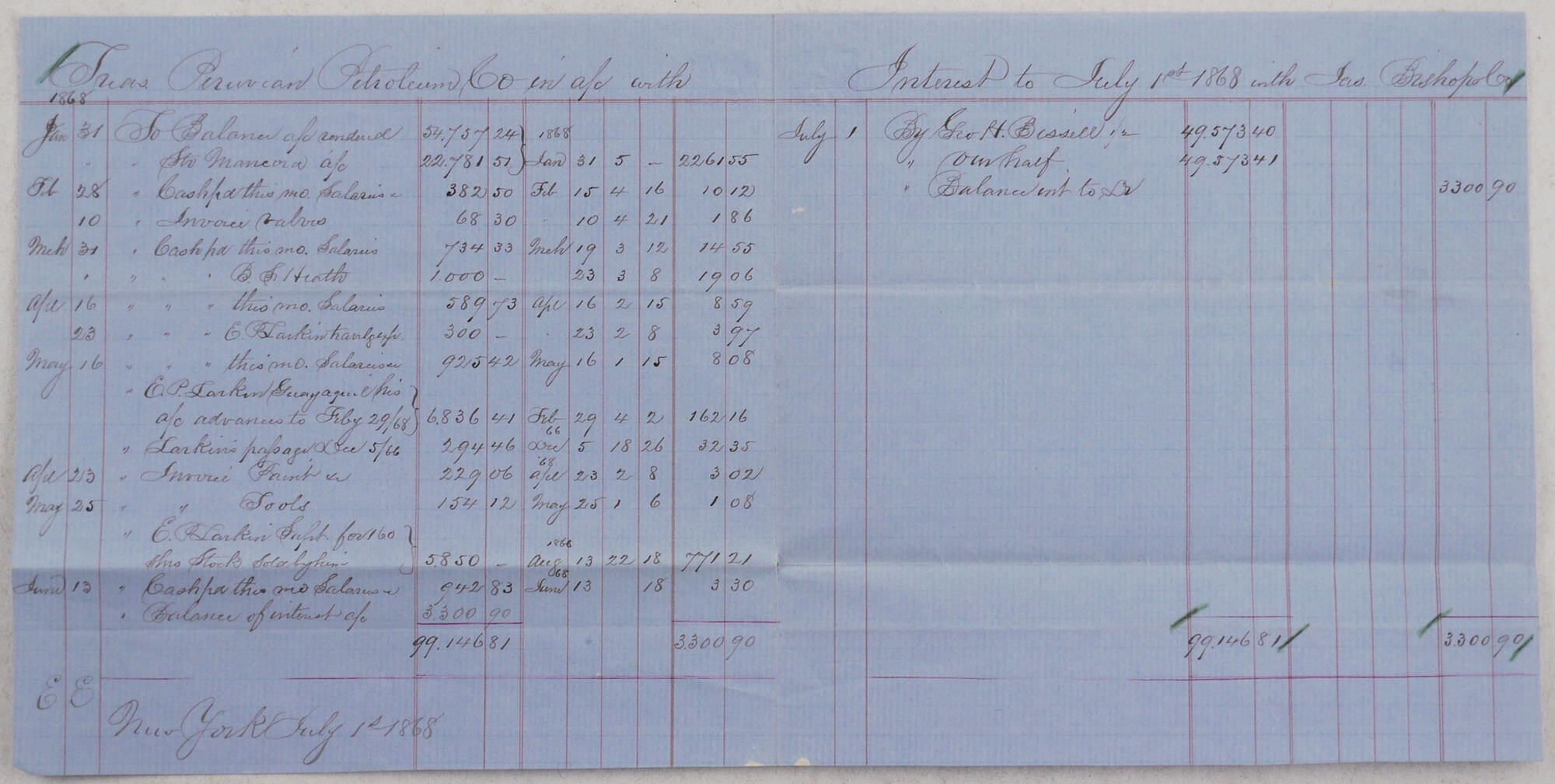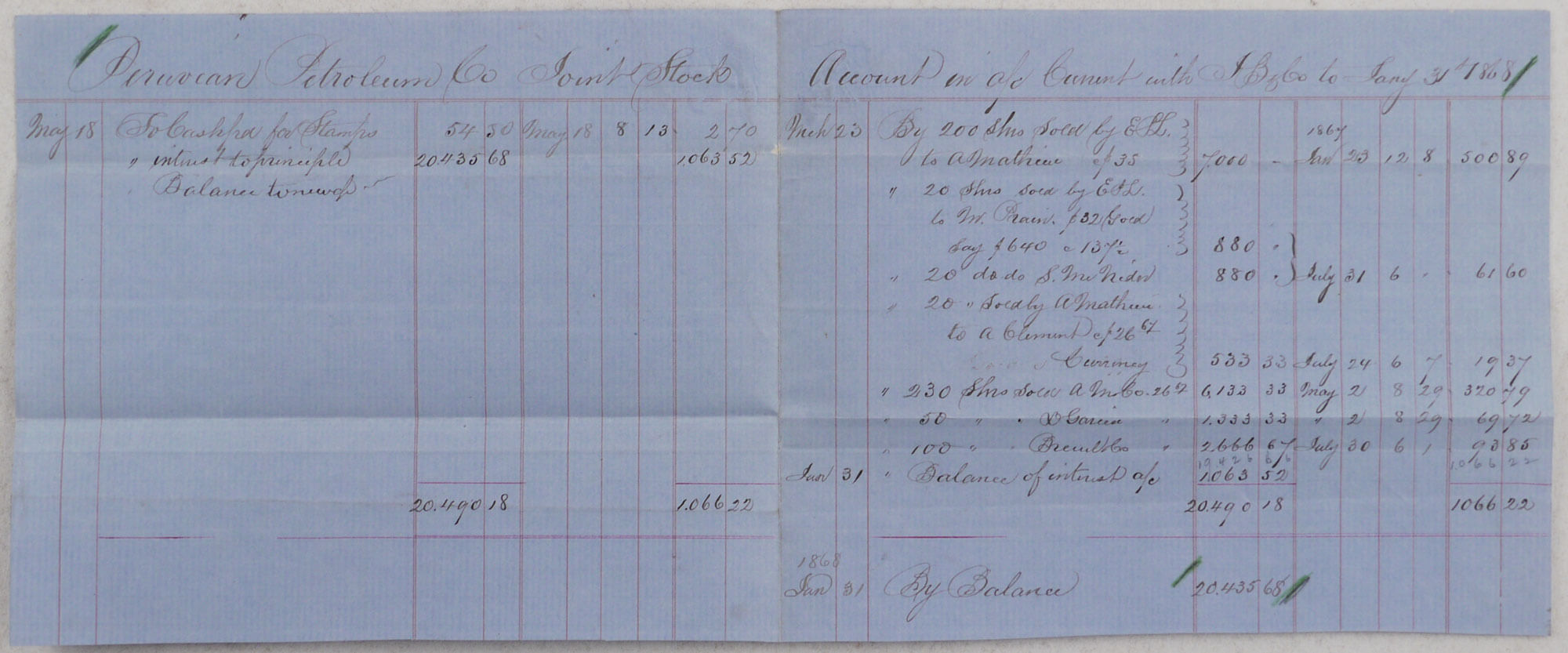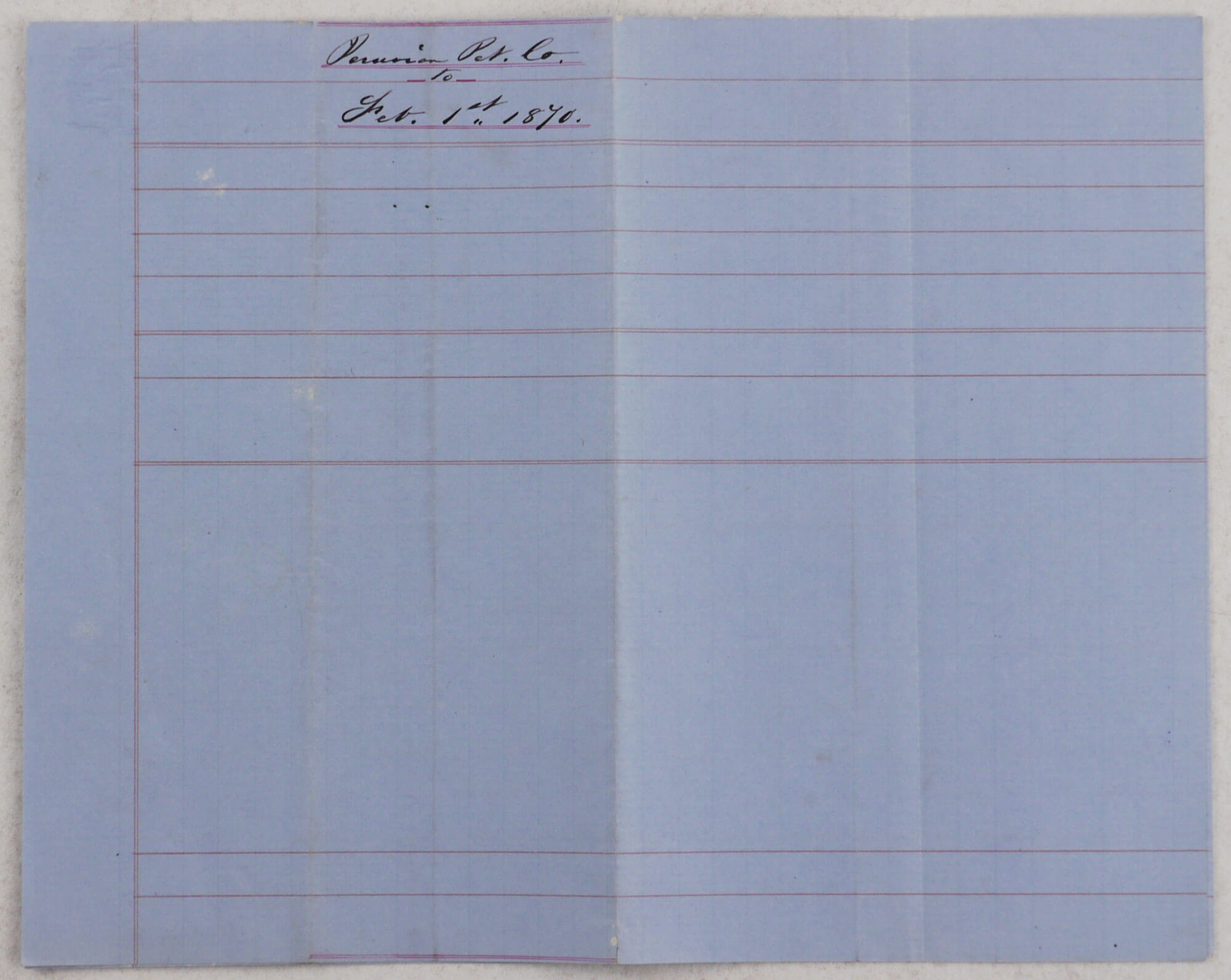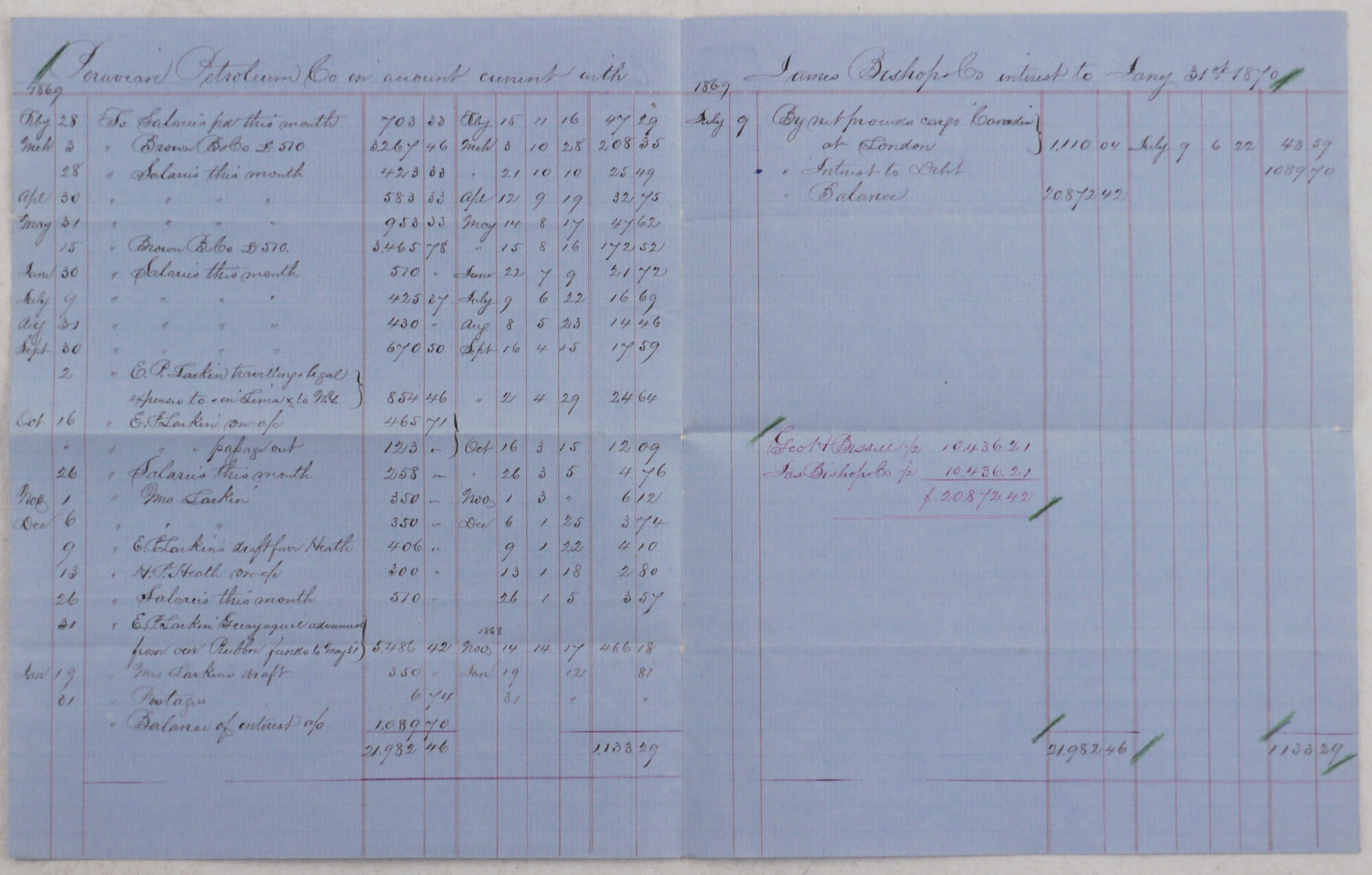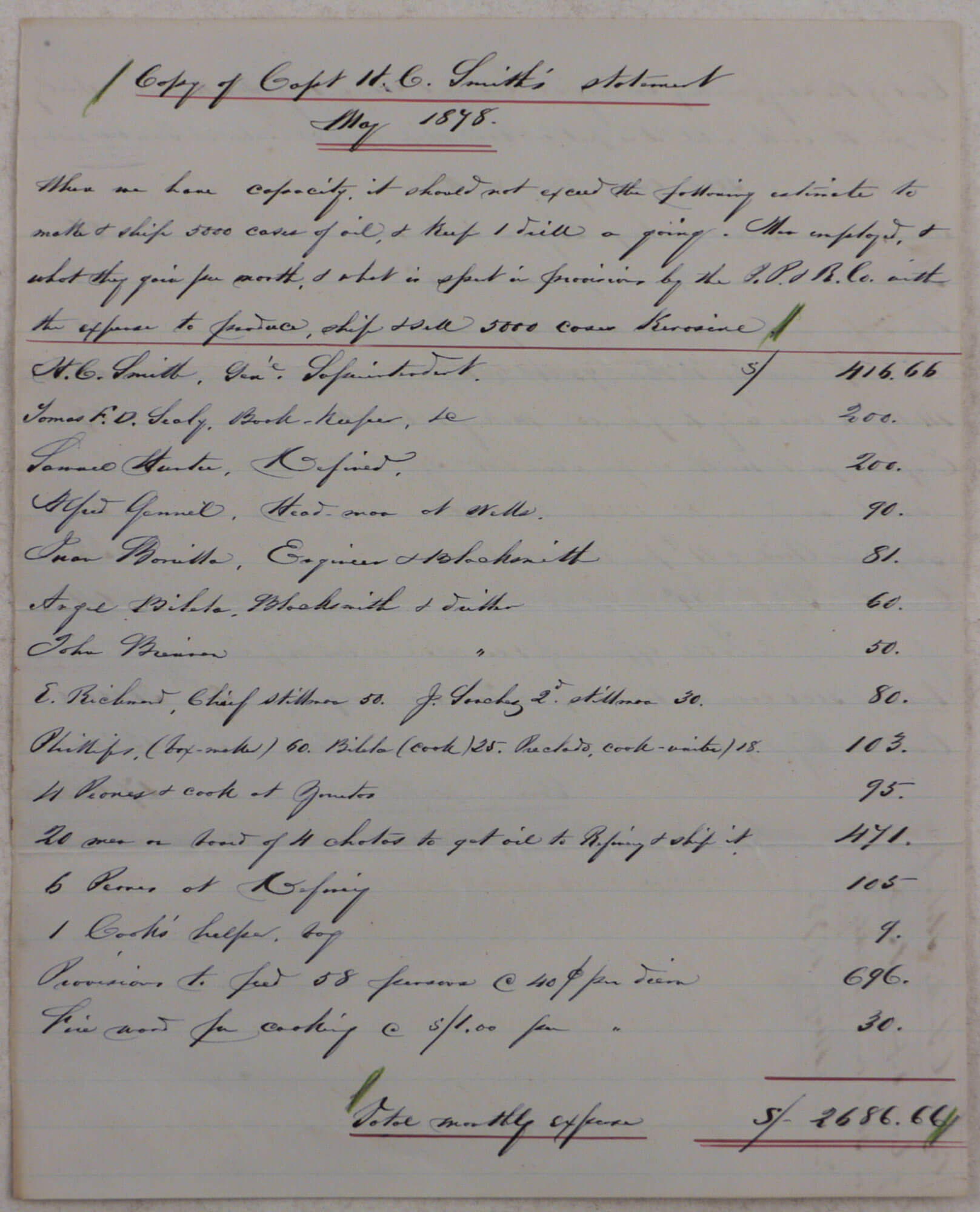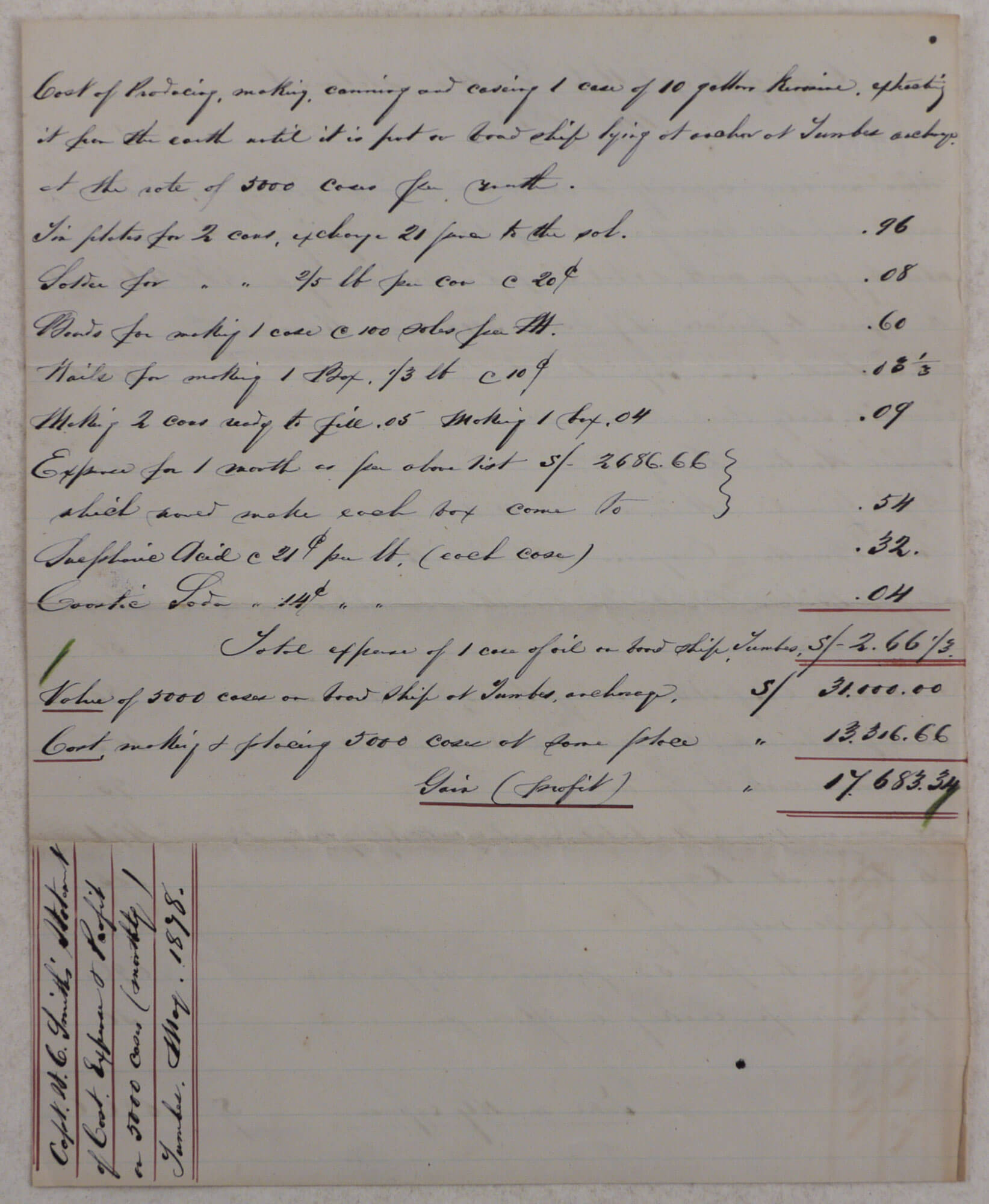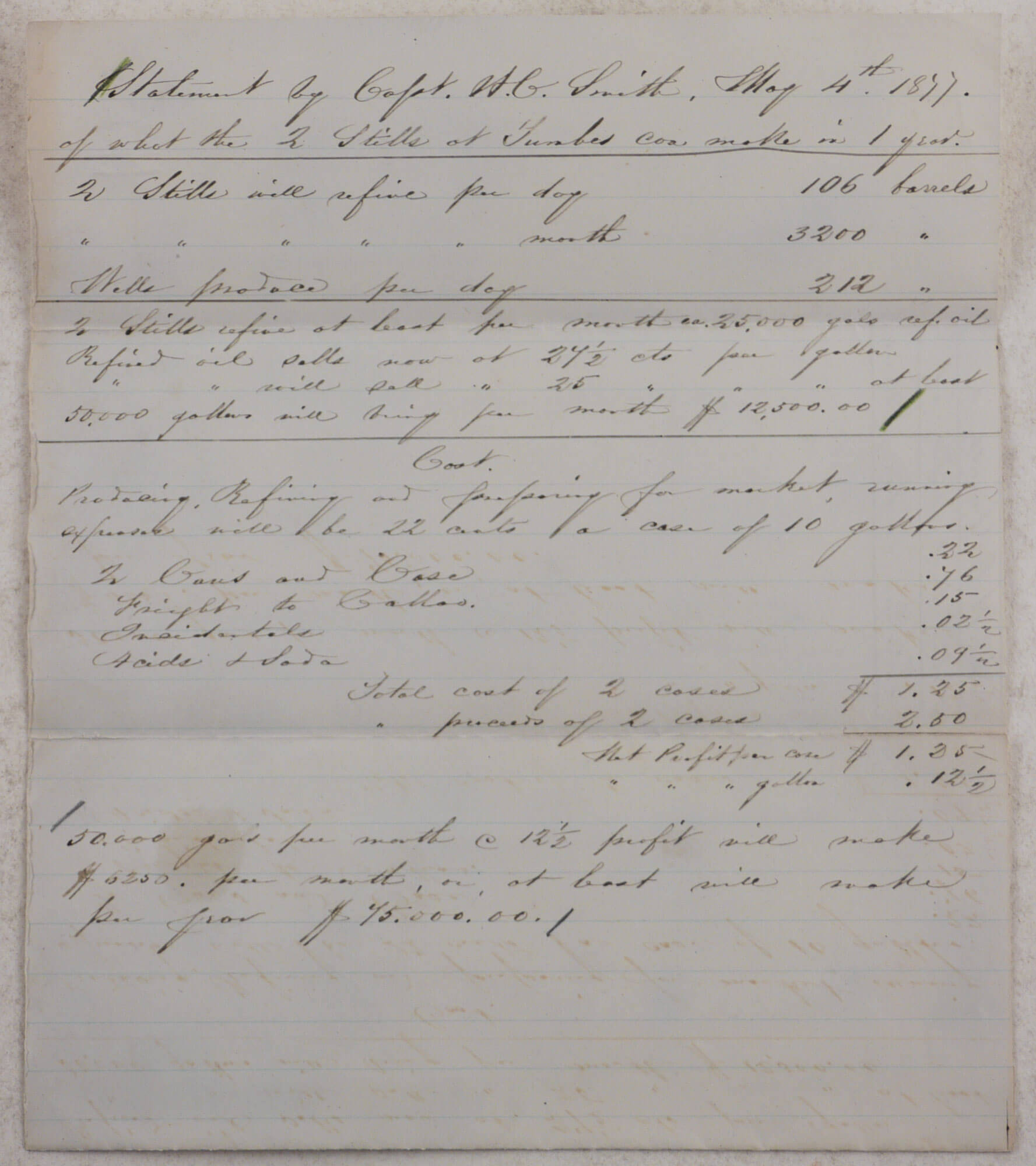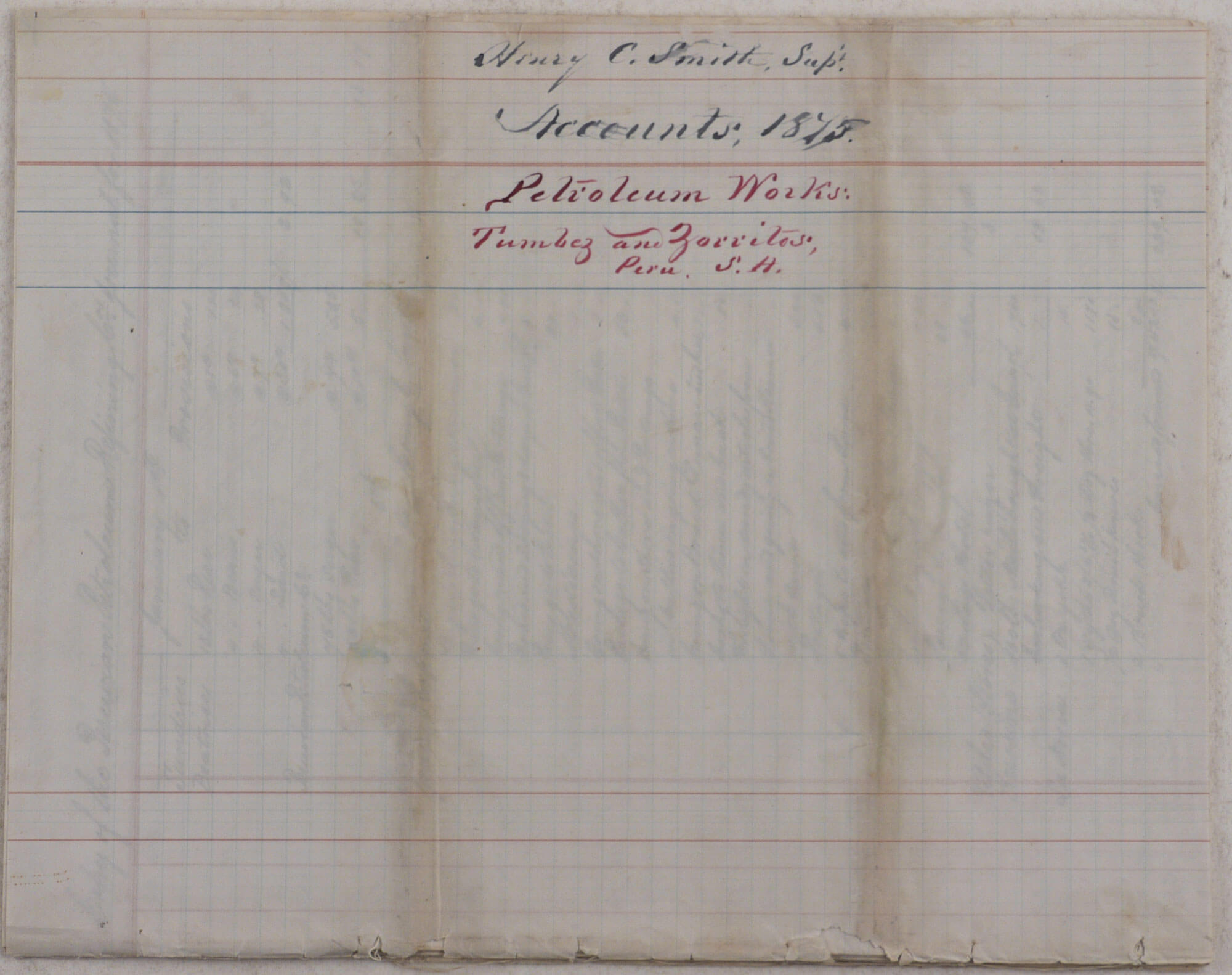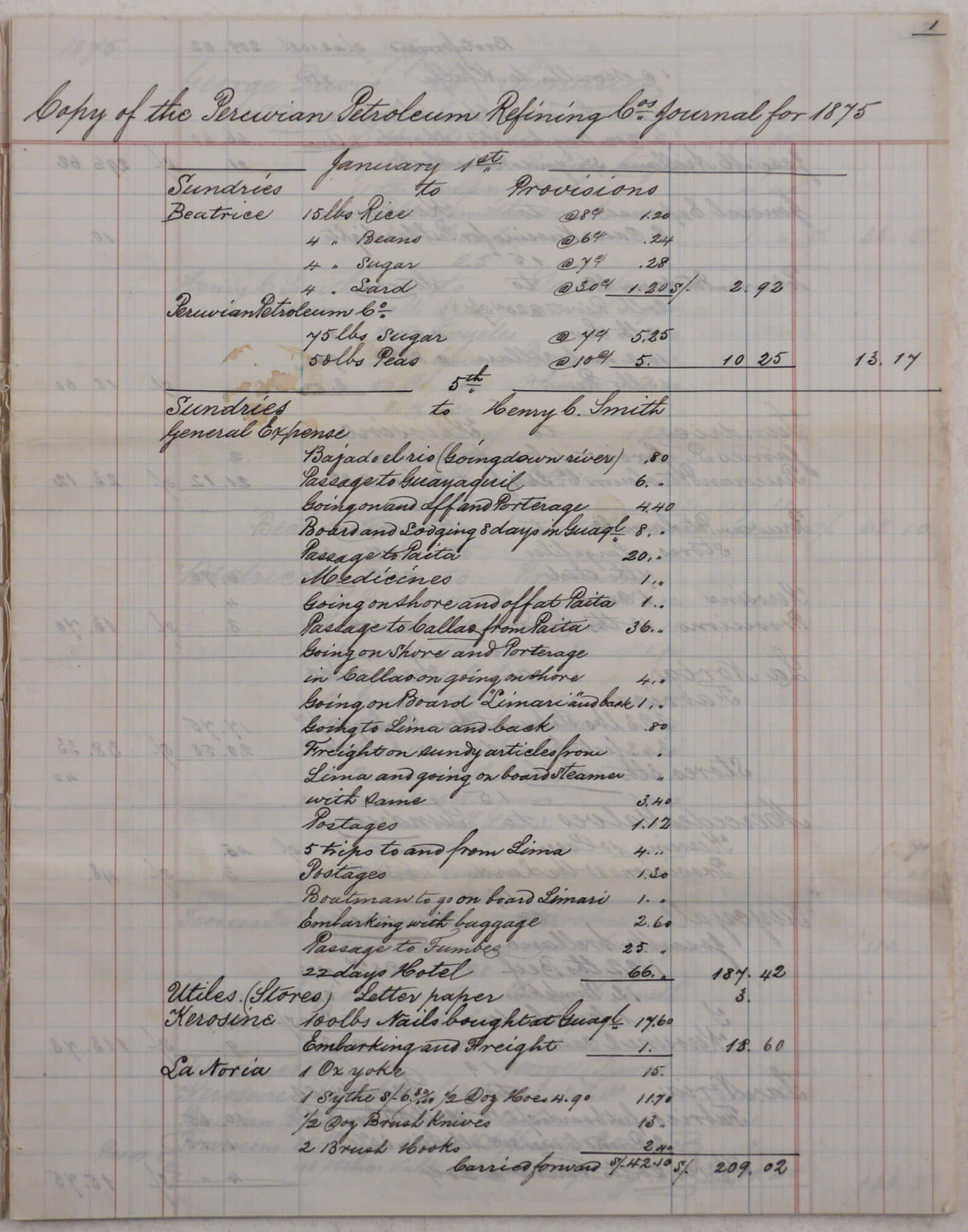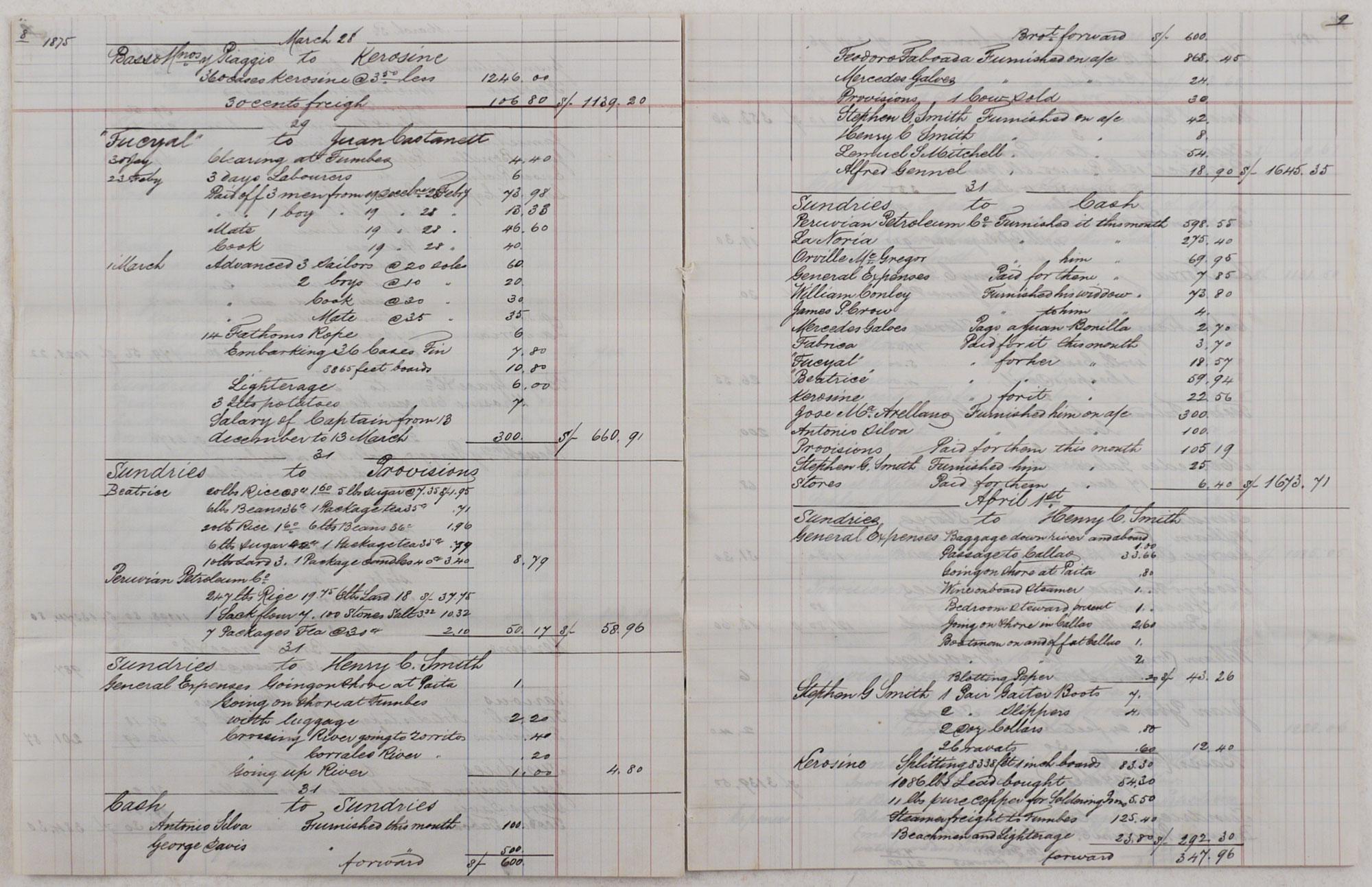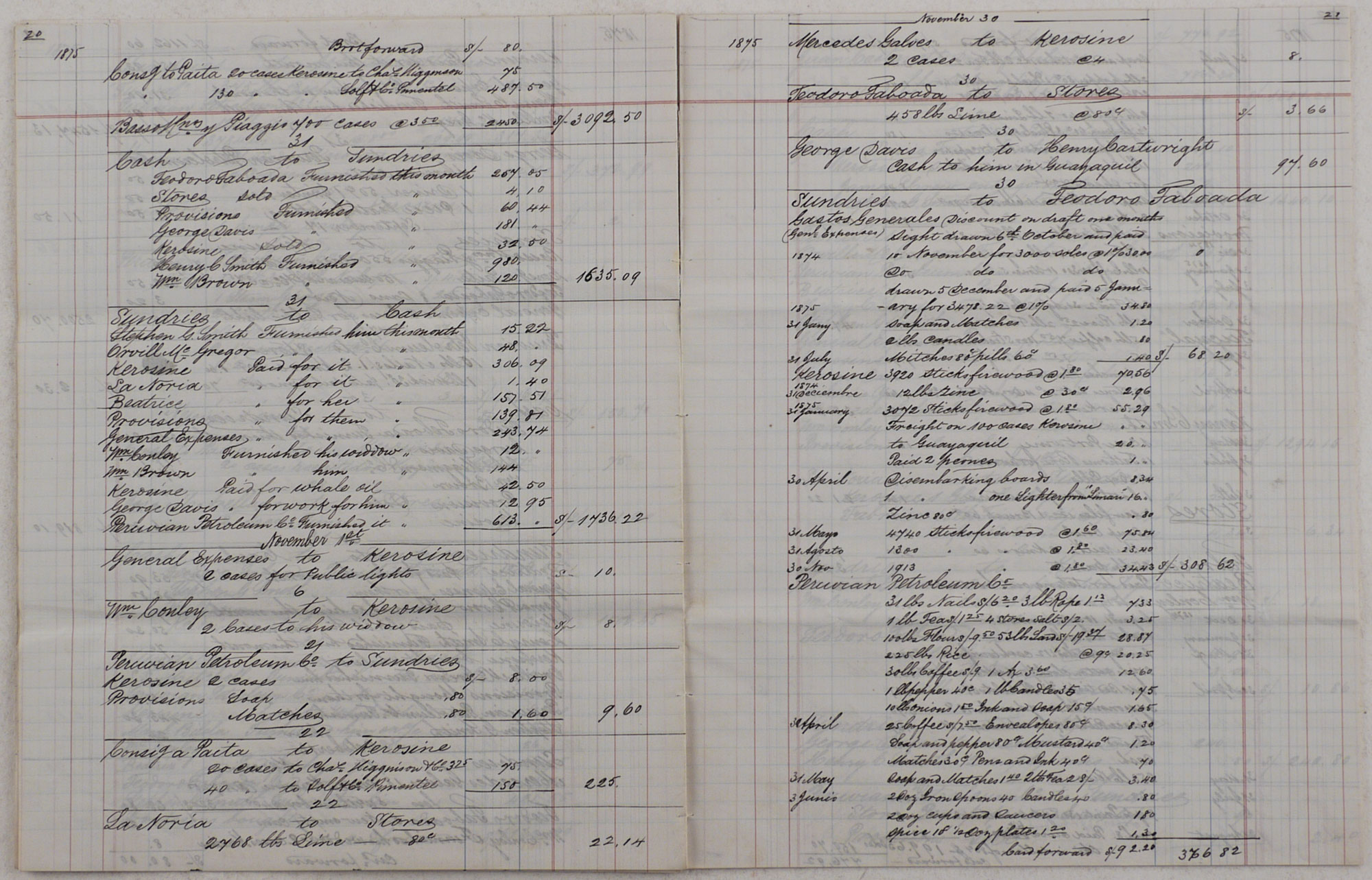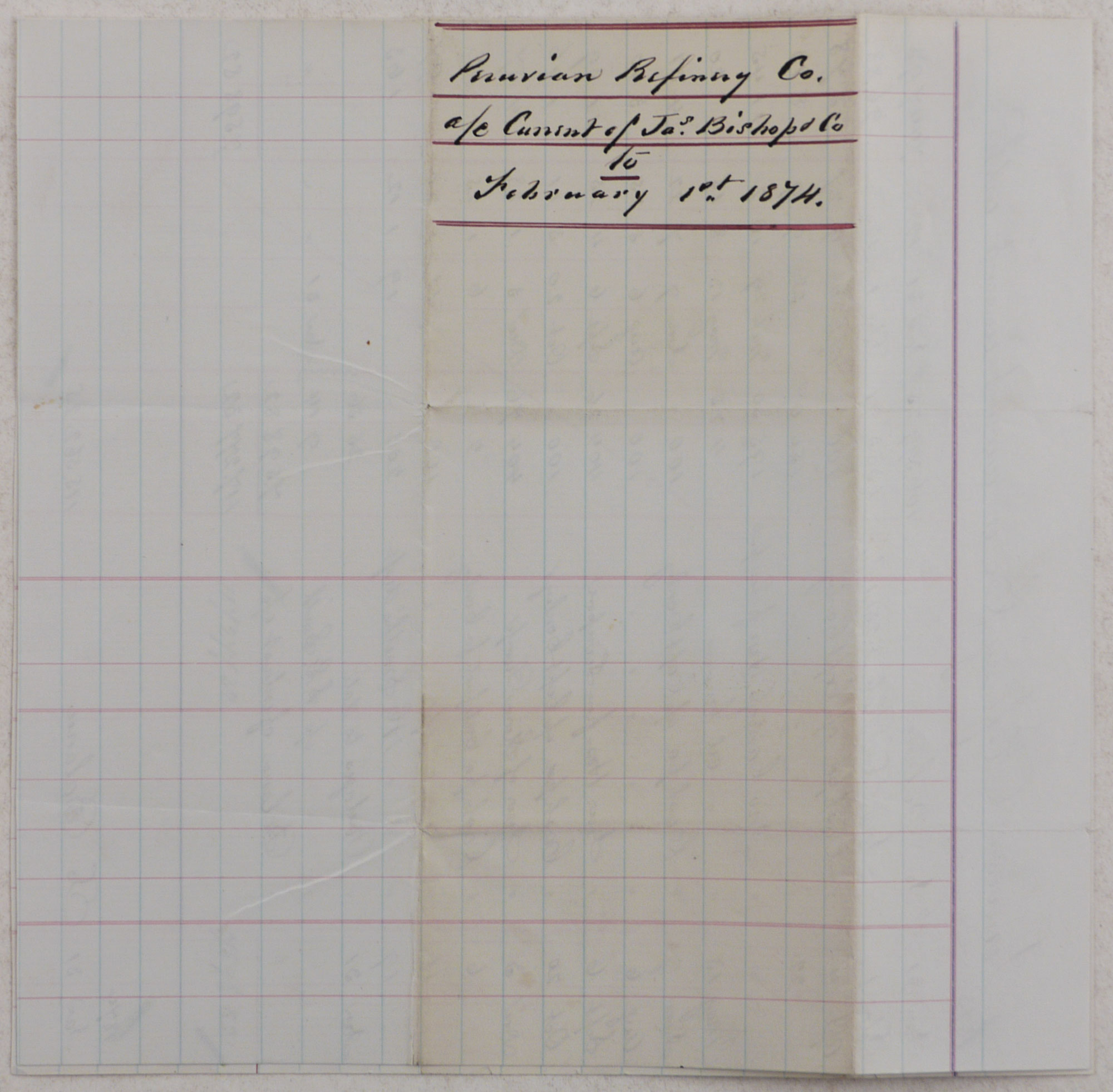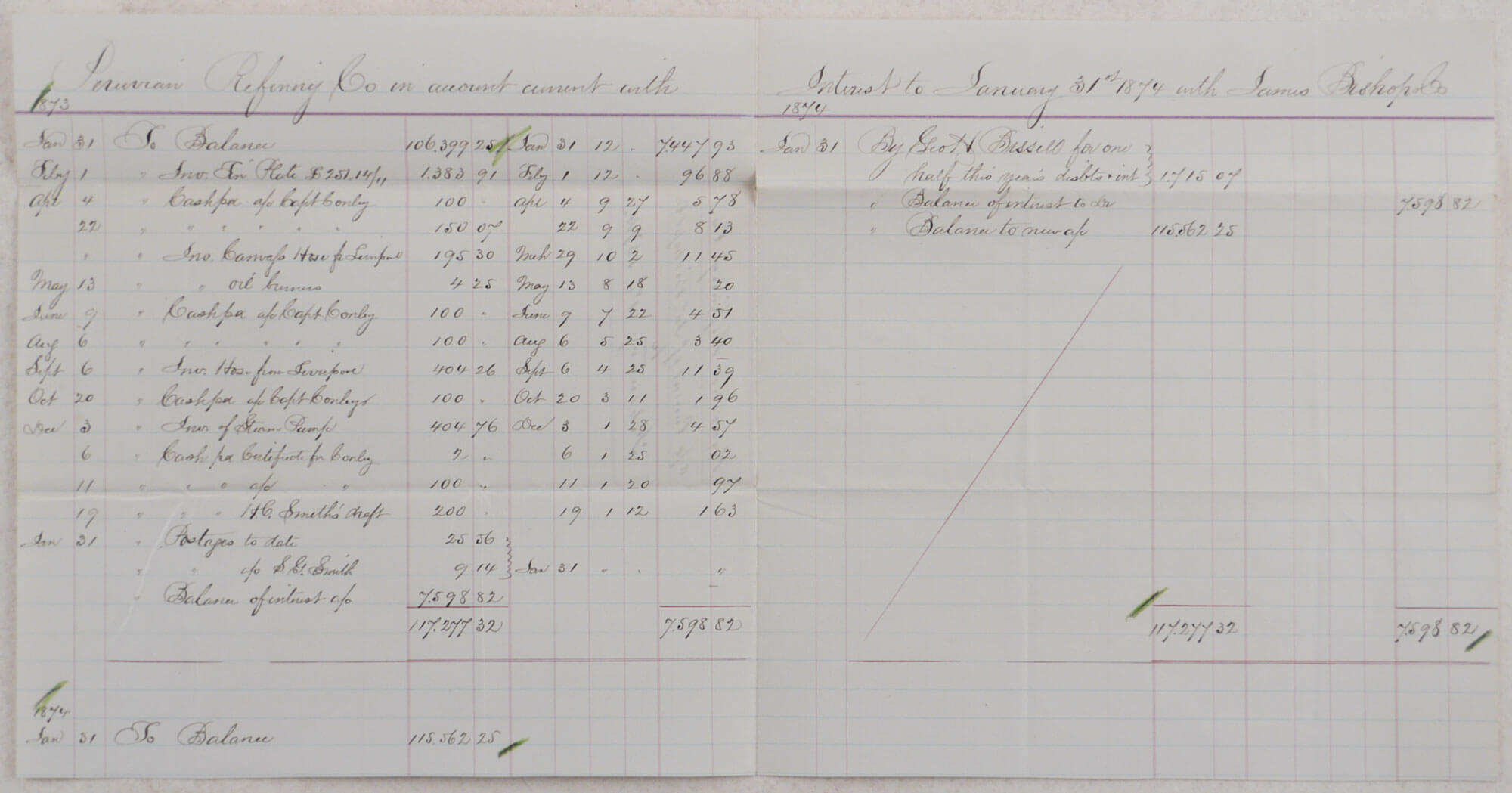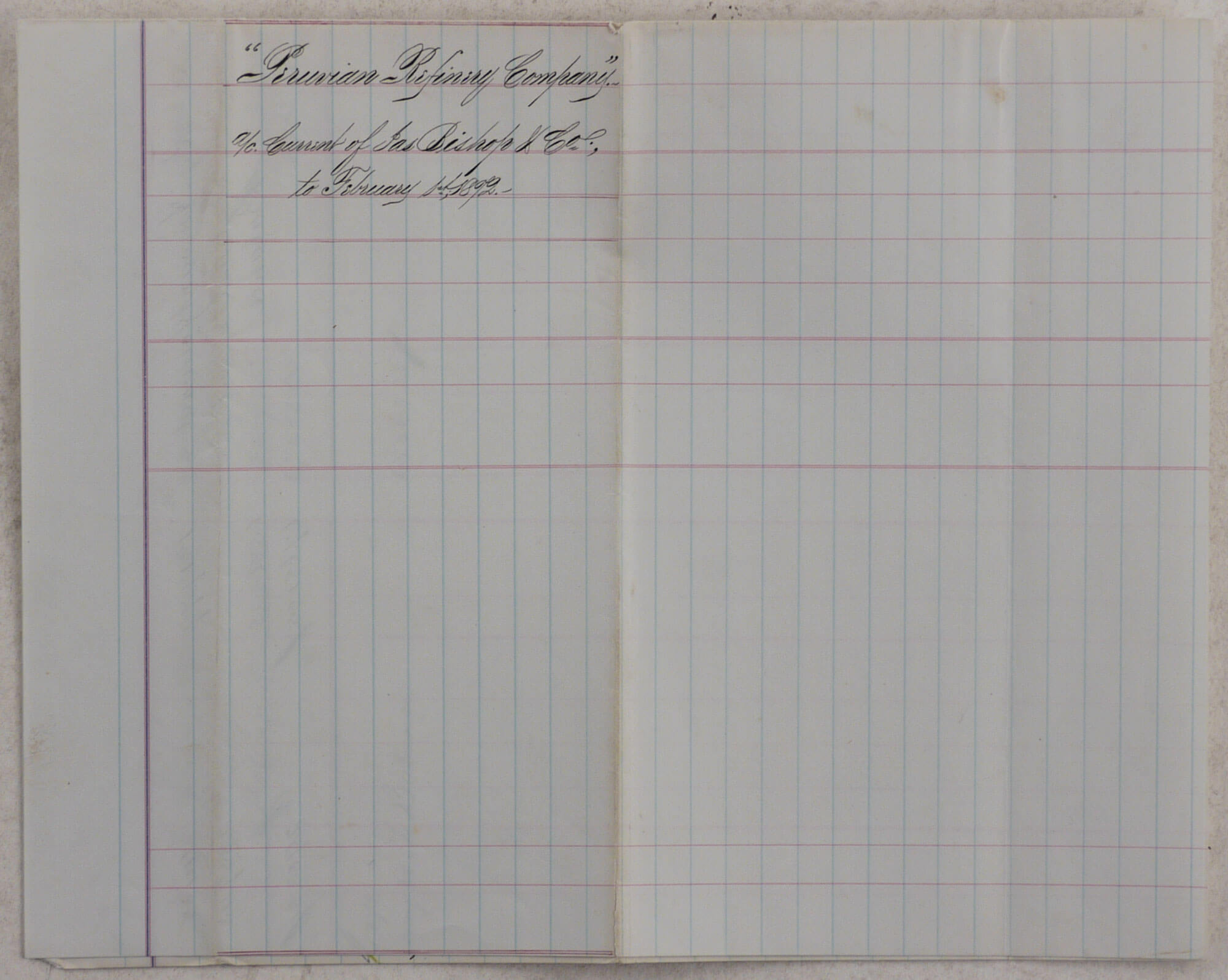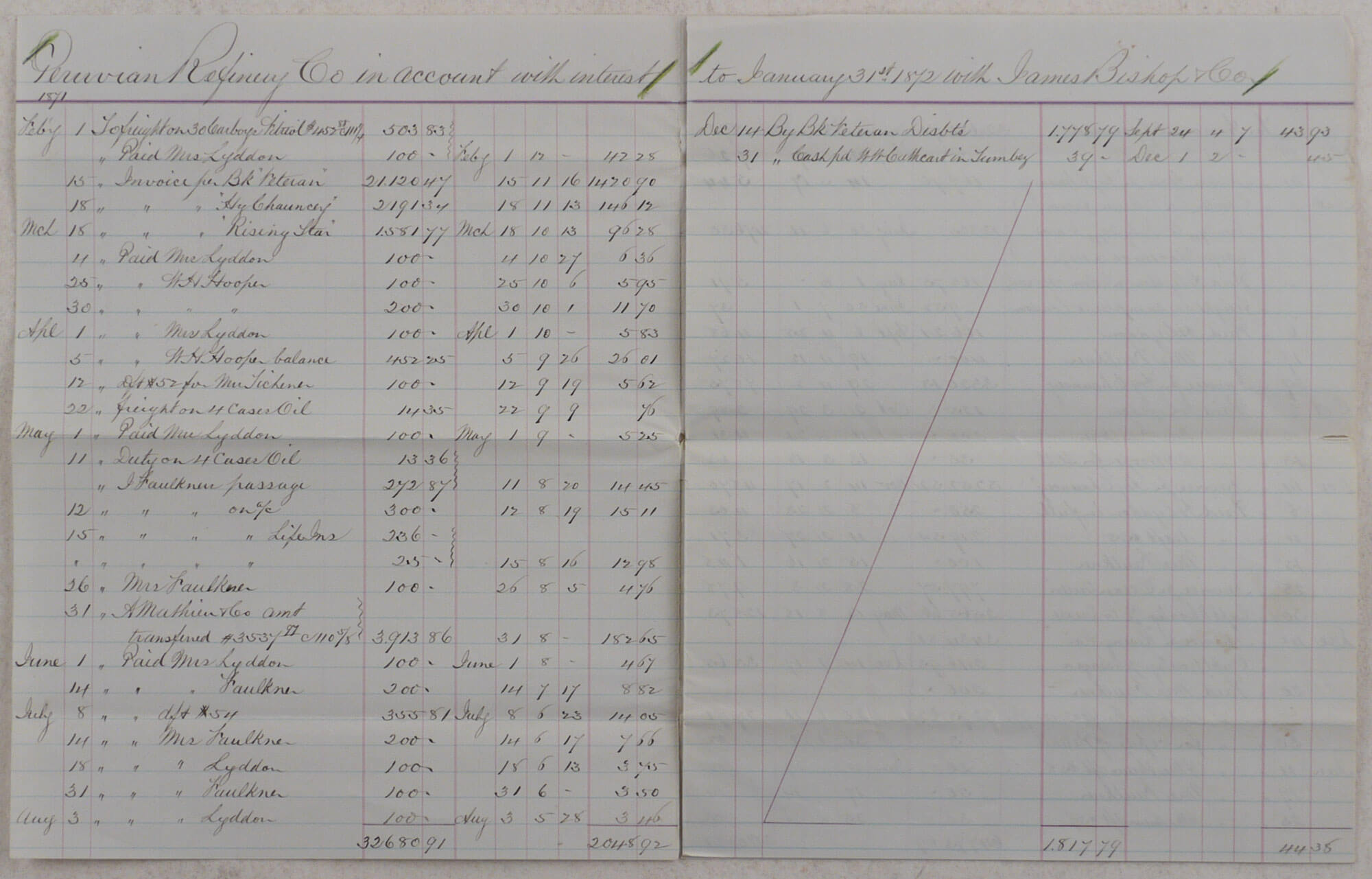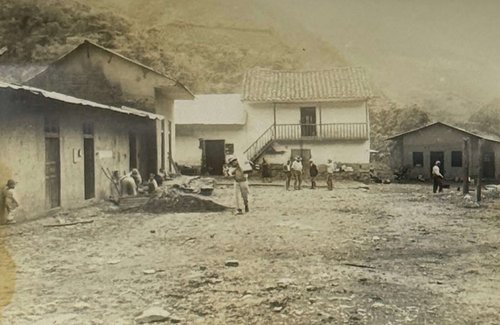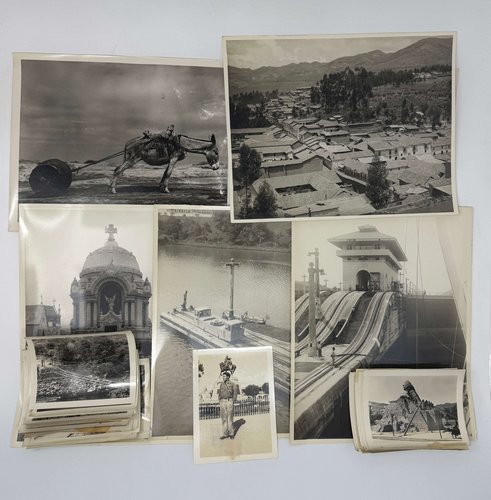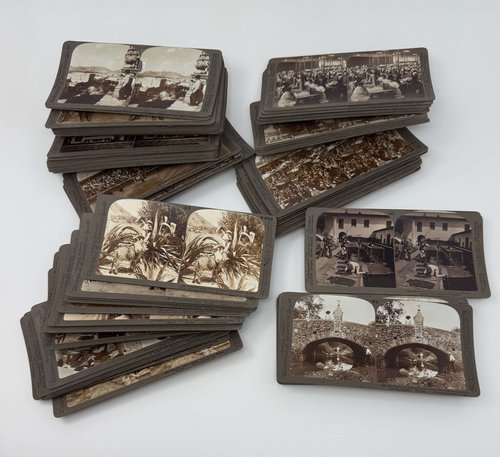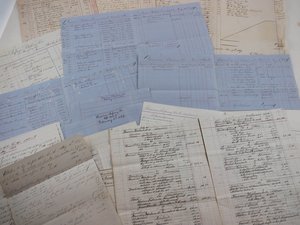
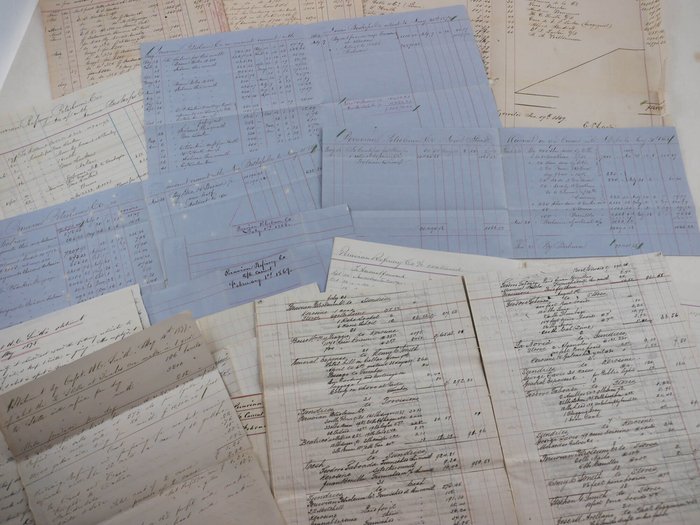
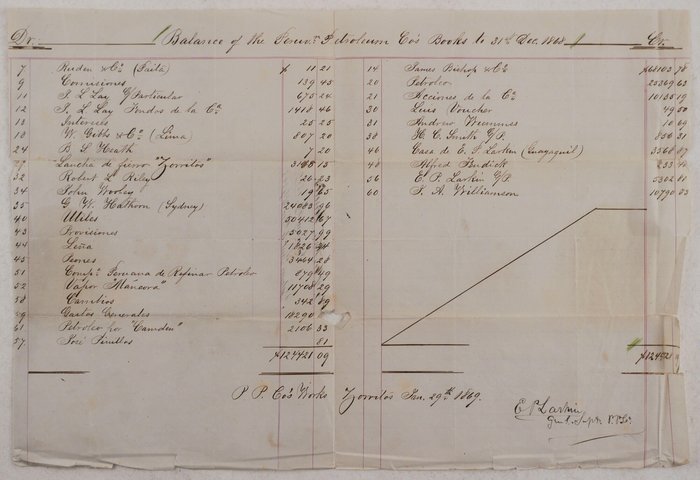


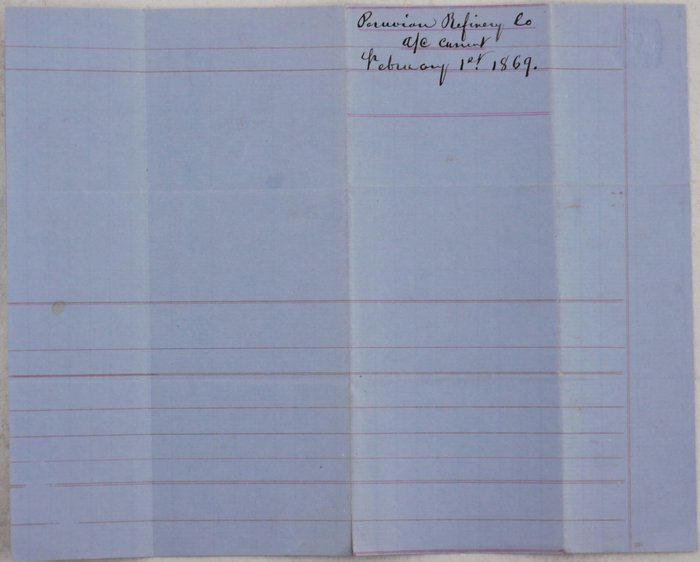

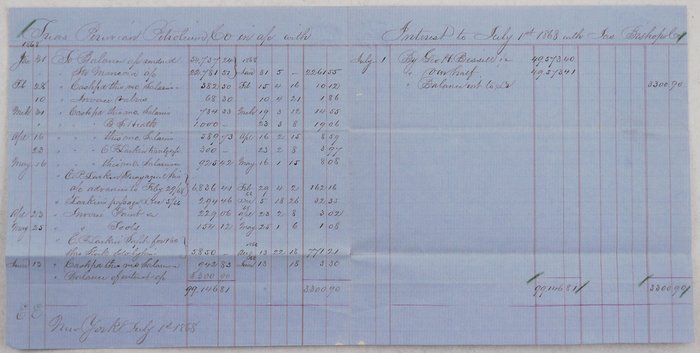
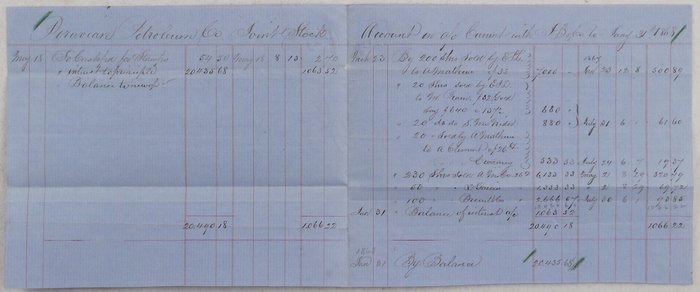
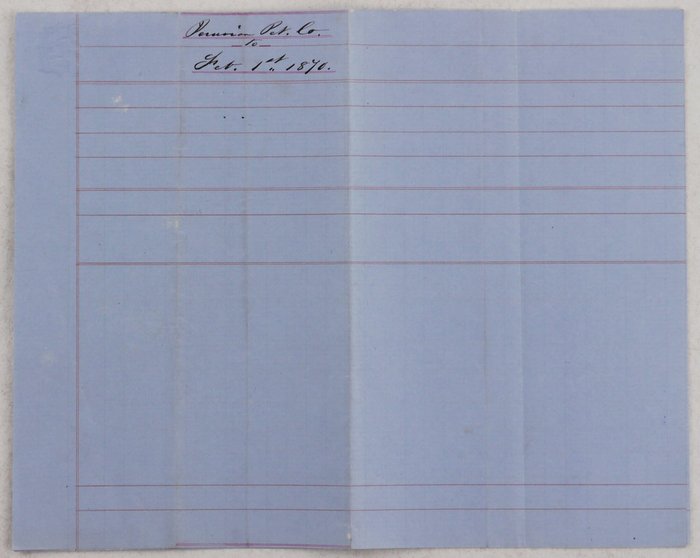
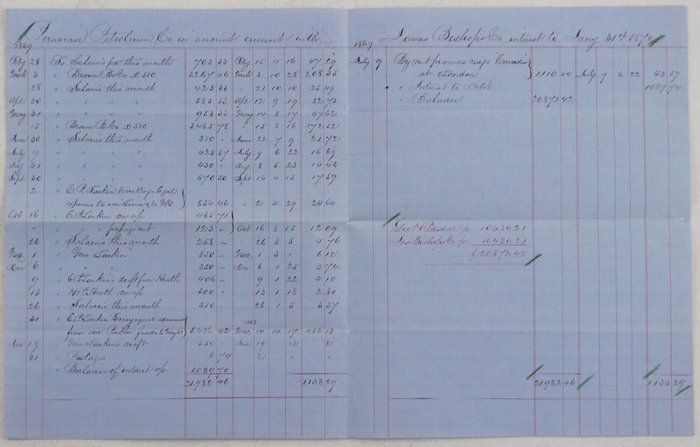
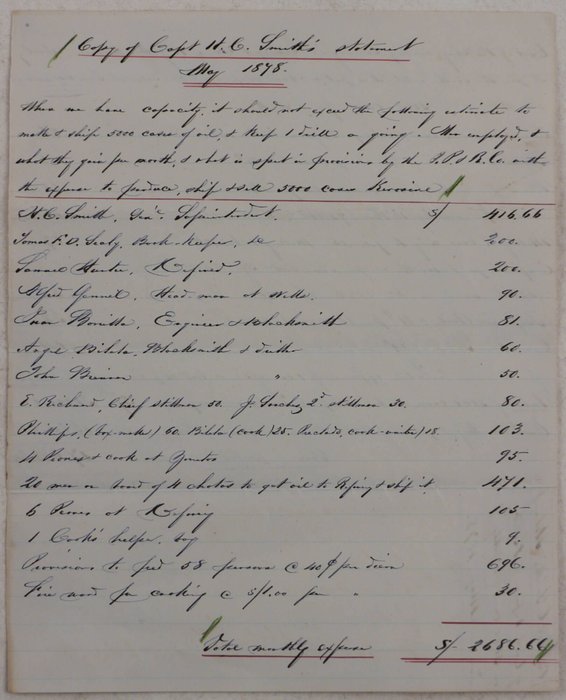
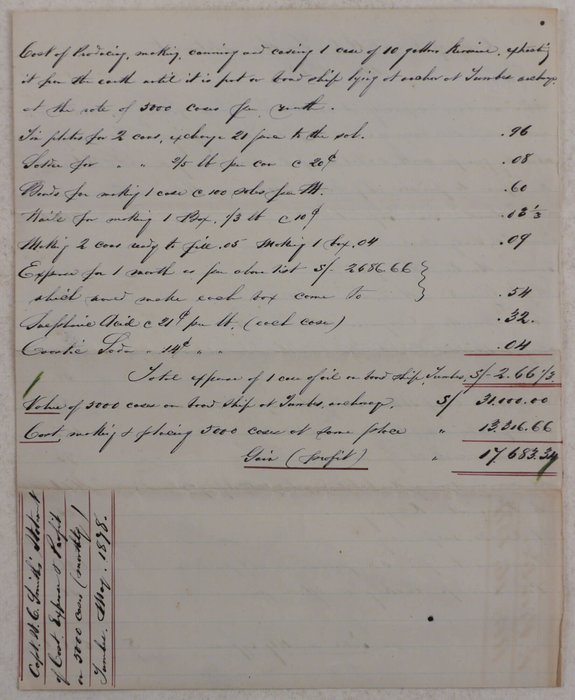
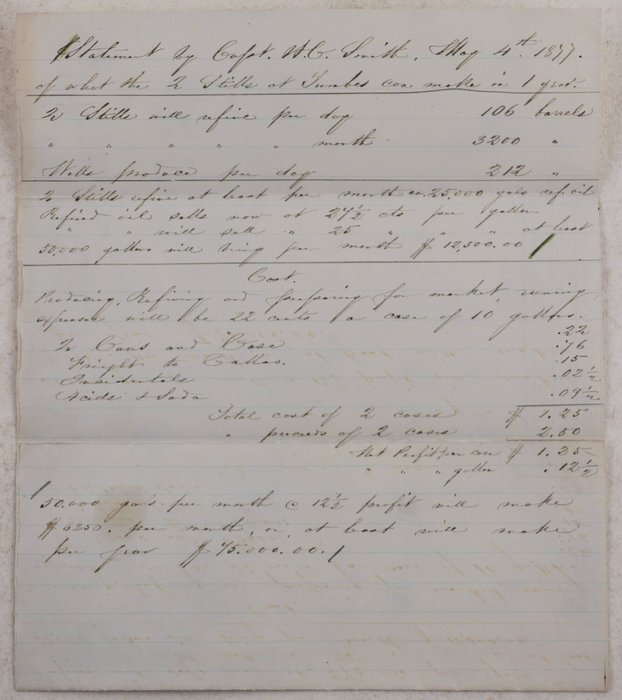
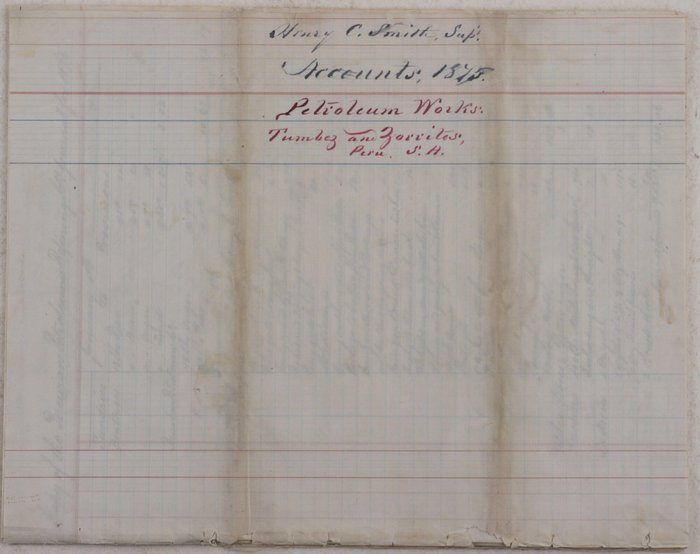

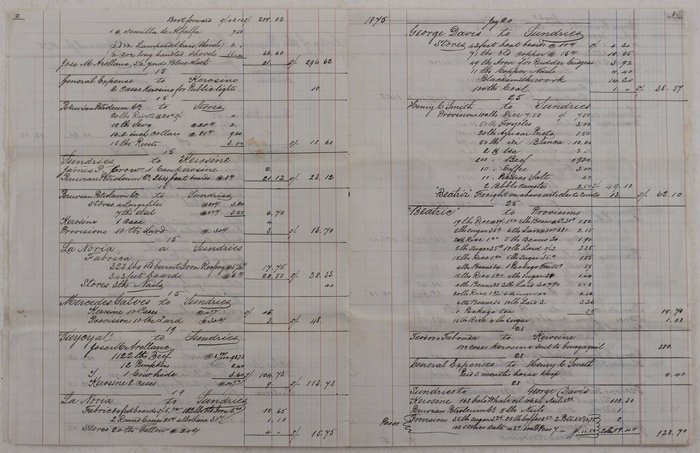
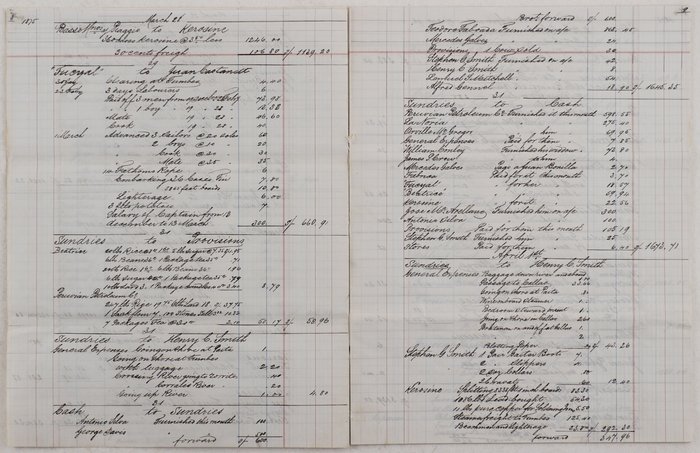
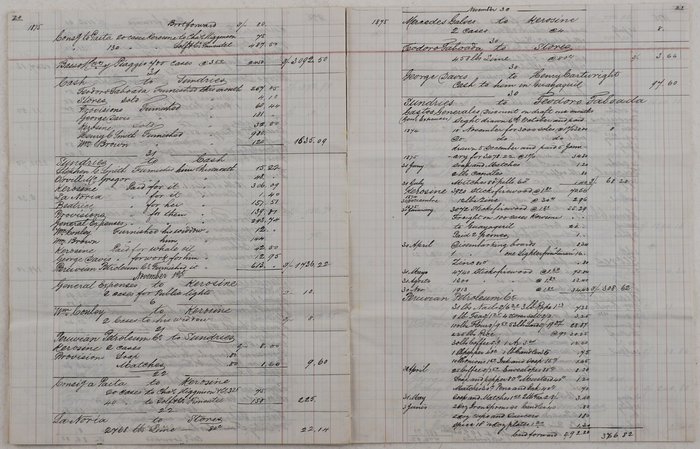
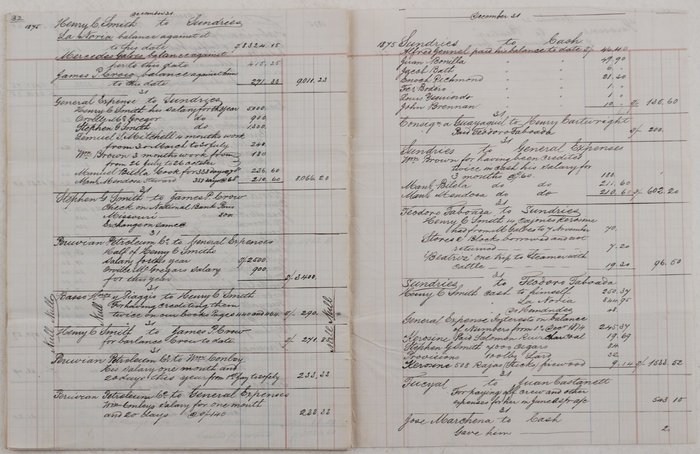
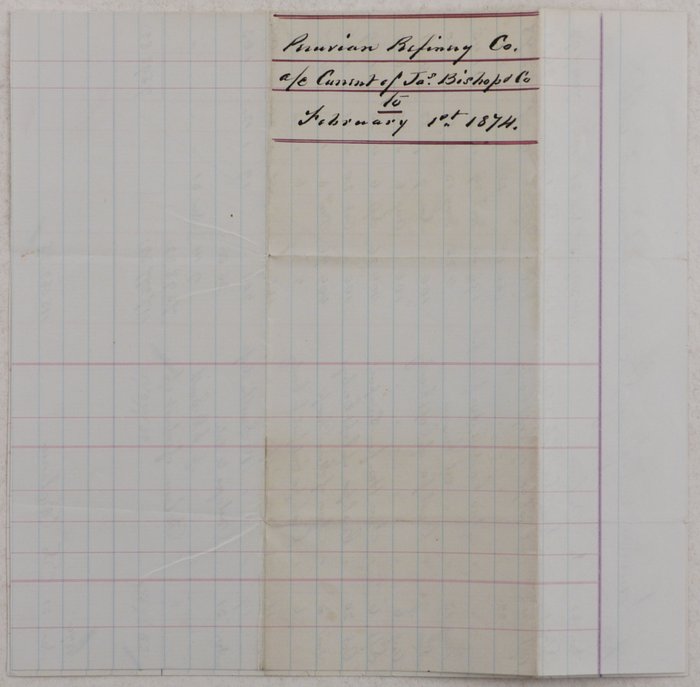

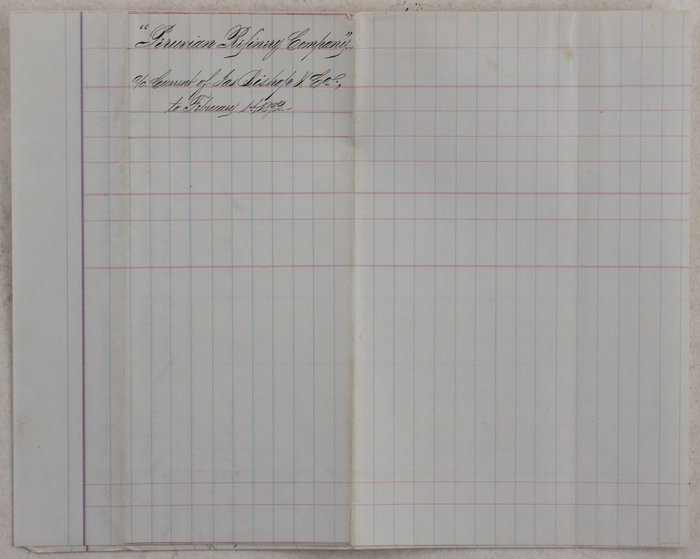
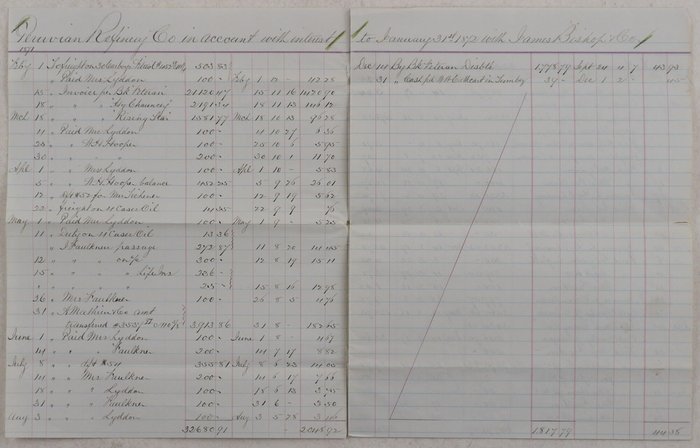
#M97
ca. 1868-1878
Twenty original manuscripts, from ca. 27x21,5 cm (10 ½ x 8 ½ in) to ca. 10,5x13,5 cm (4 x 5 ½ in). Black and red ink on lined and squared (single leaves or bifoliums). In all over 70 pp. of text. Foldmarks and creases, several documents with minor tears on the extremities and minor splitting on the folds; overall a very good archive.
Historically significant, content-rich collection of early original documents, providing insight into the pioneering years of the Peruvian oil industry. The archive concerns the activities of the first commercial company to exploit Peruvian oil - “Peruvian Petroleum Company” - and its successors, which were eventually bought by the famous Peruvian oil industrialist Faustino Piaggio (1844-1924) and later became the foundation of “Petroperu,” the national oil company of Peru.
In 1863, the first oil drilling took place in the Zorritos region on the northern Pacific coast of Peru, which became the first in Latin America and the second in the world (after Titusville, Pennsylvania, in 1859). In 1864, an American engineer, E.P. Larkin, who compiled the first geological survey of the Peruvian oil fields, founded the “Peruvian Petroleum Company,” which became the first commercial enterprise to exploit Peruvian oil. He “brought to the country the most modern instruments of his time with which he drilled at least three productive wells from which he obtained 480 barrels per day. The profile of the first towers, the installation of pipes, iron tanks, workshops, created at the foot of the Zorritos anchorage, an unprecedented landscape on the South Pacific coast” [in translation] (El Primer Auge// Schlumberger, M. Explorando las Profundidades del Peru/Ministerio de Energia y Minas, September 2023, p. 40; see more).
In 1869, “after confronting technical difficulties due to the nature of the terrain that enclosed the field, and the lack of a new agreement with the Lama family, owner of the site, the Peruvian Petroleum Company stopped operating. <…> Before one year had passed since Larkin's retirement, another firm, the Peruvian Petroleum Refining Company, returned to Zorritos and resumed the work where Larkin had left off. The owner of this company was another North American, Captain Henry C. Smith, who <..> was able to undertake a more serious exploration of the area and acquire the land that he considered had good possibilities for the installation of new wells” (El Primer Auge// Schlumberger, M. Explorando las Profundidades del Peru… P. 42). Smith built a refinery and kerosene factory near the mouth of the Tumbes River company, which became one of the first in Peru. “<…> being in need of additional capital, [Smith] enlisted the aid of Don Faustino Piaggio, an Italia Peruvian of Callao. When, in 1883, Smith died, Faustino Piaggio took over all operations in the Zorritos field, which he has since continued under the name of El Establecimiento Industrial de Petreleo de Zorritos” (Dunn, W.E. Peru: A Commercial and Industrial Handbook. Washington, 1925, p. 190). Faustino Piaggio’s company was nationalized by the Peruvian government in 1934 and became the foundation of what is now Petroperu.
Six manuscripts from the collection document the activities of E.P. Larkin’s “Peruvian Petroleum Company” in 1865-1870. The earliest paper, dated January 29, 1869, is a “Balance Sheet to Dec. 31st, 1868” of “P.P. Co’s Works, Zorritos,” with the original signature of “E.P. Larkin, Genl. Supt., P. P. Co.” The document records the company’s payments (to “Rude & Co. (Paita),” “W. Gibbs & Co (Lima),” “B.J. Heath,” “G.W. Hathorn (Sydney),” “peones,” “Compa. Peruana de Refinar Petroleo,” and others) and credits from the shareholders and investors (James Bishop & Co., H.C. Smith, E.P. Larkin, Alfred Fendick, J.A. Williamson, and others). Four documents are the statements in regards to the account of the company’s co-owner, “James Bishop & Co.,” in 1868, 1869 and 1870, recording the sales of shares, expenditures (salaries, E.P. Larkin’s drafts and travels, tools, postage, legal expenses) and the interest. A six-page manuscript, dated “Tumbes, August 21, 1870” includes two “Statements of money &c. credited to” J.A. Williamson and “James Bishop & Co.” in January 1865 – May 1870, with the records of drafts by E.P. Larkin, another pioneer Peruvian oil engineer George E. Corey, and others; money received from “Am. Consul, Panama;” credited to freight (on vessels “Bogota,” “Bolivia,” “Magdalena,” “Costa Rica”, and others), paid for “H.C. Smith trunk & books,” &c. A note on the last page reads “Not charged here amt. freight by “Enchantress” as there is a deduction to be made for cargo thrown overboard…”
Five manuscripts document the movement of funds on the account of “James Bishop & Co.” with the “Peruvian Refinery Company” in the periods ending by February 1869, 1870, 1872, 1873 and 1874. The expenses include “plans for refinery,” “drawings for acid still,” “machinery” (statement from Feb. 1869); “1 hydrometer,” “rivets & manhole plates,” “E.P. Larkin Guayaquil,” “charter schr. Enchantress to Tumbez” (statement from Feb. 1870); “duty on 4 cases oil,” “freight on samples to London” (statement from Feb. 1872), &c. One document (dated “August 1st, 1870”) records transactions of the “Peruvian Refinery and Petroleum Company” with “James Bishop & Co.” in February-July 1870.
The collection also includes a large, thirty-four-page “Copy of the Peruvian Petroleum Refining Co’s Journal for 1875,” with the additional note on the first leaf: “Henry C. Smith, Supt. Accounts, 1875. Petroleum Works. Tumbes and Zorritos, Peru, S.A.” The manuscript records several drafts and payments to “Basso Hermanos y Piaggio,” which will eventually own the company (see the entries for March 3, April 30, May 28, June 3, July 28, September 17, December 31, &c.). The other documents include “Capt. H.C. Smith’s statement of profit of Petroleum Refinery, Peru” from May 4, 1877 “on what two stills at Tumbez can make in 1 year” (“2 stills refine at least per month ea. 25.000 gals ref. oil…”); “Copy of Capt. H.C. Smith’s statement, May 1878” (with a list of names and salaries of all employees, and accounting for the cost and profit of canning 5000 cases of oil); “Cost of refined oil delivered at Callao, Peru, May 1877”; a list of “Machinery, ordered by Capt. Smith in New York, May 1877”; and estimates of cargo shipment from New York and San Francisco to Tumbes.
Overall an important, content-rich archive of original documents of the pioneering Peruvian oil companies, founded and operated by the U.S. citizens.
“The early exploration and exploitation of Peru’s oil fields – almost all of them discovered in the remote northern desert coast – came about in part through the initiative of U.S. citizens, sometimes acting in competition, sometimes in cooperation, with British citizens and Peruvians themselves. And the exploitation of Peru’s oil resources by U.S. business interests eventually led to the most volatile conflict between the United States and Peru in the twentieth century. <…> In 1863 A.E. Prentice, an American working for the gas company in Lima drilled the first well just north of the La Brea y Pariñas property on the northern Peruvian coast. In 1876 two Americans, E.P. Larkin and Henry Smith, formed a partnership to develop the Zoritos fields. This company eventually was taken over by an Italian immigrant to Peru, Faustino Piaggio, who developed the Zoritos fields into a major petroleum producer – complete with its own refinery – for the local Peruvian market by the turn of the century <…>” (Clayton, L.A. Peru and the United States: The Condor and the Eagle. Athens, Georgia: University of Georgia Press, 1999, p. 91).
“In the year 1864, Messrs. G.H. Bissell and James Bishop, of the city of New York, leased of Don Diego Lama, his estate of Prancora, consisting of 4,500,000 acres. A company called the Peruvian Oil Company was formed, with capital of 5,000,000. Operations were soon commenced by the company, on the northern portion of the tract at Zorritos, twenty miles south of the Tumbez river, immediately on the coast. The company has put down a number of wells, with good success. In the early part of 1868, the company struck a well which produced 300 barrels per day for nearly a year, when it caved in, and the production ceased. The company refines their own oil and finds a ready market for this product on the Pacific Coast, Australia, and New Zealand. The President of the company is Mr. Geo. H. Bissell” (Henry, J.T. The early and later history of petroleum: with authentic facts in regard to its development in Western Pennsylvania. Philadelphia: J.B. Rodgers Co., 1873, p. 143).

